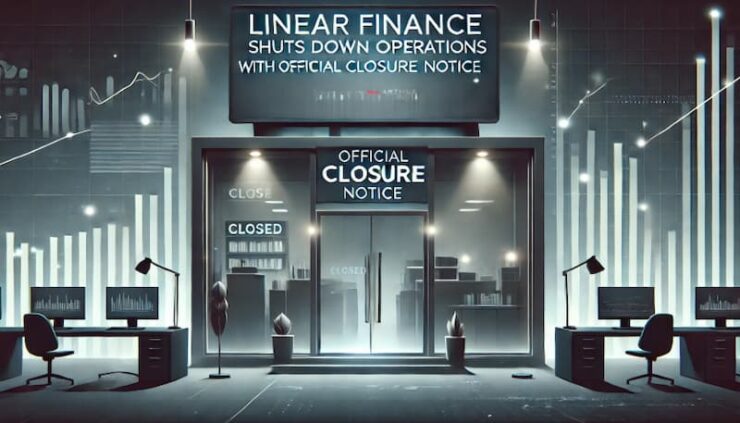Another DeFi project bites the dust. Linear Finance, once seen as a promising synthetic asset protocol, has officially announced its shutdown, issuing a Notice of Closure on March 27 in a post on X. The move confirms the project’s full exit from the decentralized finance space, citing prolonged financial instability and a crumbling operational model.
The news sent LINA, the project’s native token, into a steep decline—shedding nearly 70% over the past week and sparking fresh concerns over project sustainability in the DeFi sector.
In its official post, Linear Finance stated that the decision to wind down operations stemmed from persistent financial difficulties. Despite early profitability around its 2019–2020 launch, the project admitted it has since failed to generate sustainable returns.
“Outside of a brief period of profitability during our initial launch in 2019/20, Linear Finance has faced increasing financial challenges,” the statement read.
Initial funding came from a mix of personal contributions by the team and token liquidations, but Linear admitted this model had become unviable, prompting the formal shutdown. The closure was a collective decision by key stakeholders, according to the announcement.
Binance Delisting Delivered a Final Blow
The protocol’s collapse was accelerated by Binance’s recent decision to delist the LINA token, stripping the asset of one of its largest trading platforms. According to Linear Finance, the delisting wiped out over 65% of LINA’s market cap, leaving the token and the project in an untenable position.
While the DeFi project had faced hurdles before, the Binance delisting appears to have been the tipping point. Without a functioning liquidity engine or centralized exchange support, Linear’s ecosystem became unsustainable.
At the time of writing, LINA trades at $0.00062, down over 6% intraday, with a daily low of $0.00060. On the weekly and monthly charts, the token has crashed 67% and 72%, respectively—reflecting a broader loss of investor confidence.
With the protocol winding down, LINA’s future is uncertain, and holders are left waiting for clarity on what, if anything, will be salvaged or distributed.
A Cautionary Tale for DeFi
Linear’s shutdown underscores the fragile nature of sustainability in the DeFi space, particularly for projects that lack strong revenue models or exchange support. As the market matures, protocols must adapt or risk collapse under financial and regulatory pressure.
The fall of Linear Finance now joins a growing list of DeFi platforms that surged during the bull run only to fade amid bear market realities, increased competition, and rising user expectations.
What’s Next?
While the official closure is now underway, further announcements may clarify how Linear Finance plans to handle token redemption, smart contract shutdowns, and possible asset recovery if any. Until then, investors remain in limbo.
As DeFi continues to evolve, the Linear saga serves as a reminder of the importance of transparency, sustainable economics, and long-term vision, not just innovation for survival in a highly volatile space.





